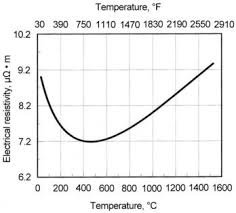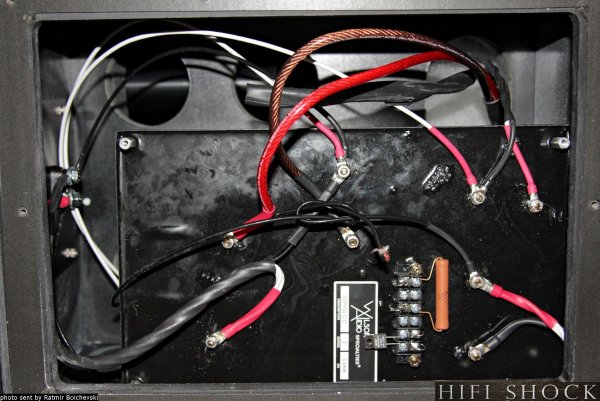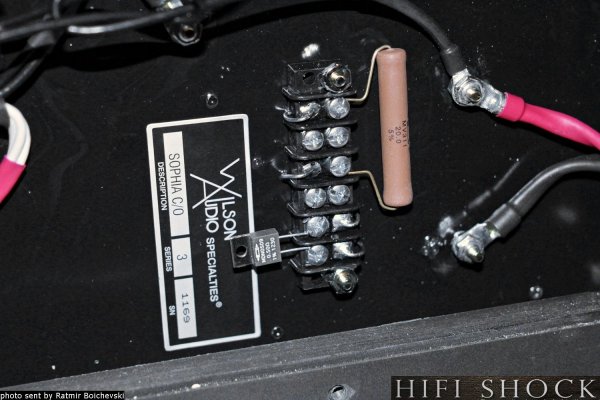Wilson Audio Maintenance
- Thread starter mauidan
- Start date
You are using an out of date browser. It may not display this or other websites correctly.
You should upgrade or use an alternative browser.
You should upgrade or use an alternative browser.
Sorry, I have been unable to use my computer at home which had to replace, and work has me buried recently. I had said I would give the values of the resistors I bought which were 5R9-10wt and a 6R5-10wt. Later today I will post reply to questions asked after I have time to read and answer.
There is at less one good reason for the different sound characteristics of Duelund resistors. Although we do not have the details we know they are "cast graphite" . Graphite has a negative temperature coefficient - this means that the value of the resistance will decrease with temperature. Caddock resistors have a minimal positive temperature coefficient, of much smaller magnitude.
This article on this subject is worth reading: http://www.troelsgravesen.dk/graphite.htm

This article on this subject is worth reading: http://www.troelsgravesen.dk/graphite.htm

good for folks to know, but always remember the more resistors you put in parallel, the lower the temperature impact would be, thus negating the negative temp coefficient. so, instead of 1* 5r, try 2* 10r, or 4* 20r ----same r, but power handling 2x in each instance
I realize I did a poor job of explaining what differences I heard by replacing the resistors. When mentioning tweeters sounded sweeter they did, but what I should have said was the transients were clearer so everything was expressed more clearly. The jump factor increased and voices easier to follow. It sounds to me that the Duelunds are faster so the starting and stopping of notes from voices and instruments are easier to understand. I love my stereo but I am always open for ways to noticeable improve sound. I would not let these technical arguments keep me from testing anything for sound improvement as long as the cost is reasonable. When reading what Debby said it prompted me to share my experience since this site's name implies the people here are interested in getting the best sound they can.There is at less one good reason for the different sound characteristics of Duelund resistors. Although we do not have the details we know they are "cast graphite" . Graphite has a negative temperature coefficient - this means that the value of the resistance will decrease with temperature. Caddock resistors have a minimal positive temperature coefficient, of much smaller magnitude.
This article on this subject is worth reading: http://www.troelsgravesen.dk/graphite.htm
View attachment 48065
Not sure if your statement about, more resistors you put in parallel, is related to a previous post or not, as I am replacing resistors, not addinggood for folks to know, but always remember the more resistors you put in parallel, the lower the temperature impact would be, thus negating the negative temp coefficient. so, instead of 1* 5r, try 2* 10r, or 4* 20r ----same r, but power handling 2x in each instance
Seems like most thing in sound reproduction need some break-in to me, so after extended break-in is when I compare changes.The Caddocks take a while to break in. Impossible to seriously compare old resistors to new.
Paralleling resistors with double the value raises wattage but halves their value! IE..... ..2x 10Rx10 --------< ======>------ will be a 20 watt 5r ..Not sure if your statement about, more resistors you put in parallel, is related to a previous post or not, as I am replacing resistors, not adding
Last edited:
The tweeter and midrange. I am not sure if there is one on the Sophia III as I see no compartment for them.I am always up for a tweak . That being said, Sophia 1 is not the easiest to get to without a lay down and disassemble of the bottom..
Did you do just tweeter and midrange or Woofer to ?
My manual says the resistors were moved from bottom to the back of speaker for the III version. No mention of a bass resistor. Are you going from memory?Yes the 3 have a 20 ohm bass Wire wound Caddock and a Flat .05 caddock for phase ..If I recall the whole bottom has to come off !
Attachments
Btw, replacement resistors of similar wattage to the Caddocks, but with a different formfactor will fail to efectively act as fuses. The reason being the Caddocks, despite their high dissipation figures can only manage about 5W without a heatsink.
Wow you took the bottom off. You are committed. Think I will pass, but thanks for info.
My manual says the resistors were moved from bottom to the back of speaker for the III version. No mention of a bass resistor. Are you going from memory?
Before I switched to Devialet from a 400 wt Audio Research amp I blew 3 tweeters, 2 at same time one party and the tweeters fried but the Caddock resistors were fine. Wilson made me pay even though under warranty, said I abused them. Not sure if the Duelund CASTs would have protected in that case, but the Duelunds protected tweeters driven by Devialet repeatedly loud as they blew first. So from my experience Duelunds worked better at protecting tweetersBtw, replacement resistors of similar wattage to the Caddocks, but with a different formfactor will fail to efectively act as fuses. The reason being the Caddocks, despite their high dissipation figures can only manage about 5W without a heatsink.
Similar threads
- Replies
- 51
- Views
- 16K
- Replies
- 2
- Views
- 4K
- Replies
- 0
- Views
- 1K
| Steve Williams Site Founder | Site Owner | Administrator | Ron Resnick Site Owner | Administrator | Julian (The Fixer) Website Build | Marketing Managersing |



